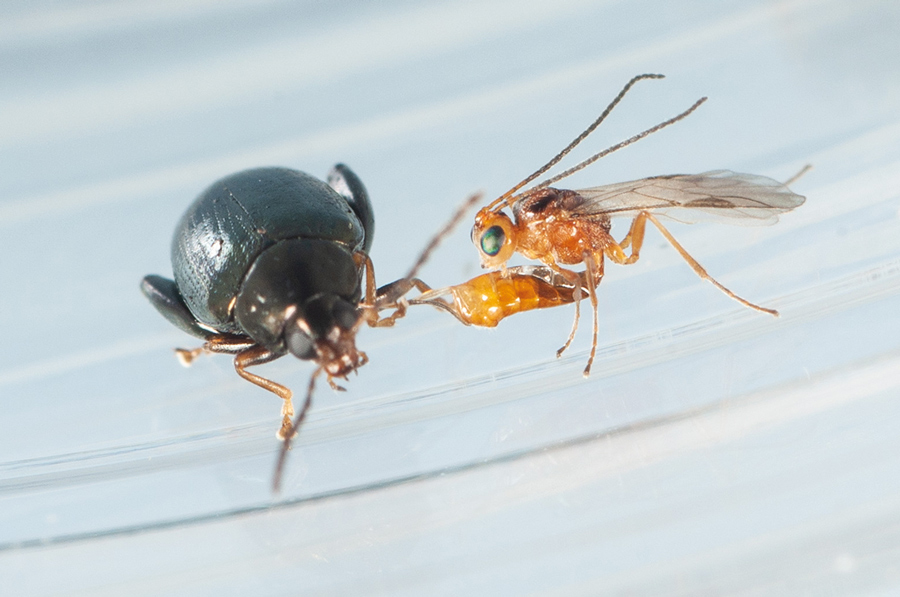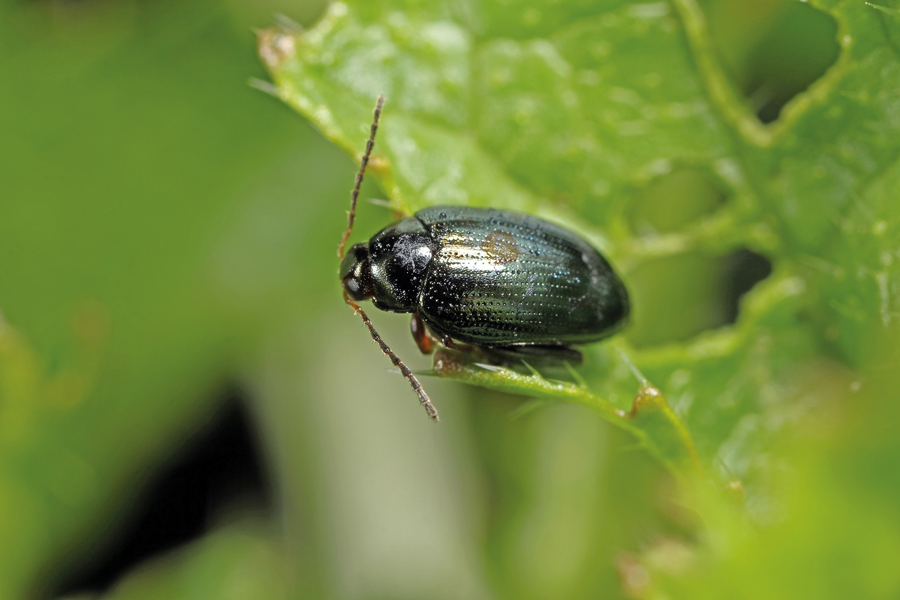Smallest OSR harvest for 25 years predicted
10th March 2020
A survey on the impact of cabbage stem flea beetle on oilseed rape crops in 2019-20, insecticide resistance and beneficial insects were some of the key items discussed at the AICC annual technical conference recently.
The latest survey results conducted by the Association of Independent Crop Consultants (AICC) were presented by AICC Academy (AICCA) member David Boulton. Data were captured in the first week of November 2019 from 106 AICC members, covering 79,040ha of the UK crop. In England, respondents accounted for 73,130ha, or 16 per cent of the total OSR area.
AICC agronomists were asked to reveal the hectarage of oilseed rape grown for harvest 2019, along with the area in the ground for harvest 2020. In addition, flea beetle damage assessments and cropping intentions for 2021 were also requested.
Mr Boulton revealed that there has been a 20 per cent fall in oilseed rape plantings across the surveyed area between harvest years 2019 and 2020.
There were significant regional differences within that figure, with the North East seeing an increase in area, while the East Central and South East regions experienced the sharpest drop.
“These results essentially reflect the difficulty in controlling cabbage stem flea beetle,” he added.
This is backed up by assessments of damage caused by the pest, which increased across all regions except Yorkshire in 2019 when compared with the previous autumn, said Mr Boulton.
“Overall, there has been a 27 per cent increase in damage on the last cropping year,” he added.
Resistance
A recent investigation at Rothamsted Research has revealed a sharp increase in the scope and severity of insecticide resistance in cabbage stem flea beetle populations across England, delegates heard.
Since the neonicotinoid seed treatment ban in 2013, growers have been relying solely on one class of insecticides – pyrethroids – to control adult flea beetles in the autumn.
As the seasons have passed, it has been increasingly evident that actives such as lambda-cyhalothrin are declining in efficacy as, despite multiple sprays, crops have still failed.
To try and quantify resistance in cabbage stem flea beetle populations, PhD researcher Caitlin Willis has been taking and testing samples over the past two summer harvest years.
In 2018, about 47 samples from across England were tested. The average number of resistant beetles in each sample was found to be 28.5 per cent, with a greater proportion of beetles sitting in the lower resistance level categories.
After a more concerted push for samples from growers and agronomists in 2019, along with samples taken from around Rothamsted’s own land, 157 samples from a wider geographical area
were investigated.
From the larger number of 2019 samples, the average pyrethroid resistance value had increased to 60 per cent and a worryingly high proportion of samples were in the 75–99 per cent and 100 per cent resistance brackets.
Miss Willis told AICC members that while there are slight local variations – almost on a farm-
by-farm basis – there is no statistical difference between regions
and counties.
This suggests there are no resistance ’hotspots’ and insecticide efficacy is likely to be reduced across the OSR area, except in the very far north of the UK.
“Resistance is pretty severe and appears to be everywhere, but we did receive one sample from the north of Scotland which was the only one we found to be truly susceptible,”
said Miss Willis.
The project also looked into resistance mechanisms and found that the target site ’kdr’ resistance mutation was most common, with the ’super kdr’ mechanism only present in one
2019 sample.
Beneficial insects
Encouraging a long-forgotten parasitic wasp in oilseed rape growing areas could provide some reduction in cabbage stem flea beetle pressure, according to an on-going PhD project.
With the one class of insecticides available to control the pest breaking down to resistance, alternatives are desperately needed to negate CSFB’s impact on the national OSR crop.
Rothamsted Research PhD student Patricia Ortega-Ramos has been looking into potential integrated pest management (IPM) techniques and more specifically, the role of beneficial parasitic insects in cabbage stem flea beetle mortality.
There are seven known parasitoids of cabbage stem flea beetle, with six affecting the pest at the larval stage and one during its adult stage – this particular one, microtonus brassicae, could be important in the context of current struggles on-farm.
What do we know?
The parasitic wasp female attacks cabbage stem flea beetle by laying an egg inside the adult beetle. After hatching, the larva then feeds inside the beetle before exiting the pest, which is the process that kills it.
It is then suspected that the parasitoid larvae falls to the soil where it spins a cocoon within which it pupates, but more work is needed to confirm this. The adult parasitoid exits the cocoon and starts the lifecycle again.
Utilising the huge numbers of samples sent in by growers and agronomists to Rothamsted after a call for samples ahead of autumn 2019, Miss Ortega-Ramos tested captured beetles for presence of
the parasitoid.
“We found that microtonus brassicae was present in 70 per cent of the fields studied so far and the parasitism rate was about 7 per cent,” she told delegates at the event.
While this sounds modest, encouraging numbers to increase parasitism rates with changes in agronomy practices such as reduced tillage and implementation of flowering field margins might be possible, according to Miss Ortega-Ramos.
Furthermore, an assessment of the impact of pyrethroid insecticides on the beneficial wasp shows that recommended and low doses of lambda-cyhalothrin results in high mortality rates.
Combined with evidence that pyrethroid resistance is rife in cabbage stem flea beetle populations across England, the use of these insecticides in the autumn is questionable if growers are to encourage natural predation.
Continuing her work next season, Miss Ortega-Ramos is aiming to improve understanding of cabbage stem flea beetle and parasitoid population dynamics and interactions, as well as how to further increase the numbers of beneficial parasitoids in OSR fields.
“Hopefully the research being done now will potentially enable us to lower the pest pressure and keep oilseed rape as part of our landscape,” she added.

The microtonus brassicae parasitic wasp female attacks cabbage stem flea beetle by laying an egg inside the adult beetle.

